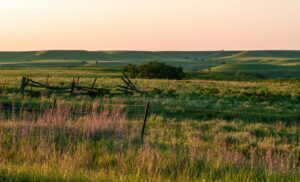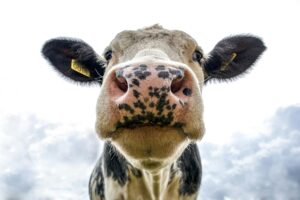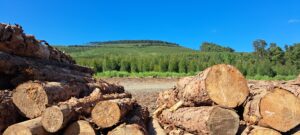
Planting trees in grasslands won’t save the planet – rather protect and restore forests
Why rangelands matter, and why misguided initiatives here do more harm than good …

The WWF-SA had purchased 500 ha of Eastern Rûens Shale Renosterveld in 2013, through an initiative driven by the Overberg Renosterveld Conservation Trust (ORCT), before handing it to them to manage. The original farmhouse was converted into the Research and Visitor Centre, and the old dairy became a beautiful self-catering guesthouse.
We arrived moments before the rain, and would spend between two to three hours at the centre.

Lynch explains how the purchase of the reserve helped enormously with the linking up of watercourses and consolidating Renosterveld in the Eastern Rûens Cluster.


Grassbird. Photo used courtesy of Dr Curtis-Scott
Why stay at our Haarwegskloof Renosterveld Reserve?” reads the Overberg Remosterveld Conservation Trust (ORCT) website, with a background photo of tidy, simple but comfortable lodgings. In a smaller font “We offer a peaceful, relaxing stay in the renosterveld”. Bird watchers would be interested to hear that there are over 80 bird species here.

Agulhas Long-billed Lark
The reserve is home to a wealth of plant life, with over 500 species. Some of the rare and endemic Renosterveld plant ones include:

Moraea elegans. Photo used courtesy of Dr Curtis-Scott
Jannie Groenewald, Reserve and Centre Manager, has a plant species, Haworthia groenewaldii, named after him. Deservedly so: his MSc in Conservation Ecology and conservation feats can be read about on the ORCT website. Among the mammals, amphibians, reptiles and invertebrates which occur on the reserve are three of the Little Five (the Elephant shrew, the Ant lion and the Rhinoceros beetle).

Cape Rock Elephant Shrew. Photo used courtesy of Dr Curtis-Scott

Capturing footage of the reserve

Some of the group pose for a photo. The ORCT’s Jannie Groenewald, Odette Curtis-Scott and Keir Lynch stand on the left.

Nomonde Mxhalisa (WWF-SA Nedbank Green Trust) enjoys animated conversation with Lynch and Onkemetse Nteta (WWF-SA).

On our return trip we stopped to view some of the Renosterveld pointed out to us on the map, before hitting the road.
“Come for the day, or spend a night or three in our Renosterveld Reserve. Take leisurely walks, or just relax in this historic area”, says the ORCT website. Read about accommodation on the reserve by taking the “Come stay” option or click here.

Why rangelands matter, and why misguided initiatives here do more harm than good …

Nitish Boodhoo, University of Guelph The confirmed presence of bird flu in American dairy cattle in a March 25 report from the U.S. Department of

Press release While life without plastic might be hard to imagine, there is a renewable, recyclable and sustainable alternative to single-use plastics and many other